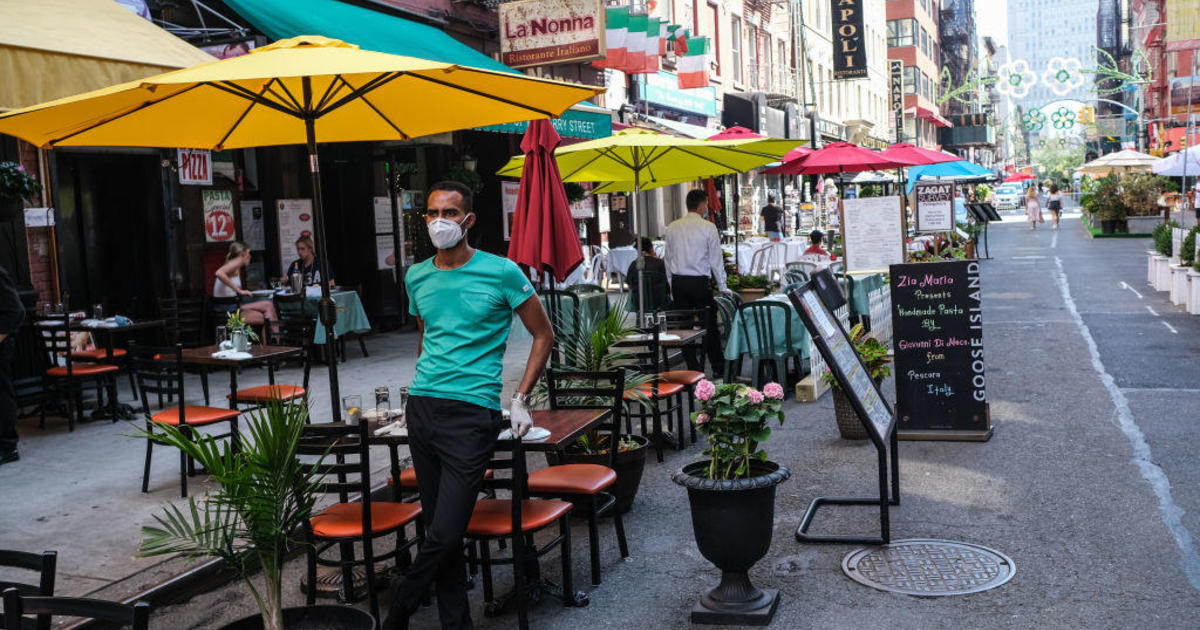
There is "a real risk" that the coronavirus can be airborne, meaning it can spread through microscopic particles that linger in the air, an open letter supported by 239 scientists says. The scientists are urging the World Health Organization and other public health organizations to amend their guidelines to reflect this risk.
"Hand washing and social distancing are appropriate, but in our view, insufficient to provide protection from virus-carrying respiratory microdroplets released into the air by infected people," states the letter, entitled "It is Time to Address Airborne Transmission of COVID-19."
The WHO has said the coronavirus is only confirmed to be airborne during aerosol-generating medical procedures performed in health care settings, such as intubation. It says the virus primarily spreads through larger respiratory droplets, which don't travel as far, which is why maintaining social distancing of about 6 feet has been recommended.
"Respiratory droplets are very large droplets that when you sneeze, for example, they shoot out of your mouth and they drop right to the ground because of gravity," Dr. Ron Elfenbein, an emergency care physician, explained Monday on CBSN. "Whereas airborne means that the virus can hang out in the air for a long time and all you have to do is walk by a cloud of this and inhale it and you're going to catch it."
The smaller particles could spread by infected individuals simply breathing, laughing or talking, said Elfenbein, who said he agrees with the scientists behind the letter.
The authors cited a study that documented transmission of the virus to people at several neighboring tables in a Chinese restaurant, even though there was "no evidence of direct or indirect contact" between them, as one example of data supporting the theory that coronavirus is airborne.
"This problem is especially acute in indoor or enclosed environments, particularly those that are crowded and have inadequate ventilation relative to the number of occupants and extended exposure periods," the letter says.
"For example, airborne transmission appears to be the only plausible explanation for several super spreading events investigated which occurred under such conditions, and others where recommended precautions related to direct droplet transmission were followed."
The authors recommend measures like opening doors and windows to increase airflow in public buildings, using "airborne infection controls such as local exhaust, high efficiency air filtration, and germicidal ultraviolet lights," and avoiding overcrowding in public spaces.
"We hope that our statement will raise awareness that airborne transmission of COVID-19 is a real risk," they write.
Coronavirus cases have been rising across the U.S., in part because of the reopenings of restaurants and bars in some states. New York City, once the epicenter of the pandemic, delayed the return of indoor dining after seeing the uptick in other communities.
Elfenbein elaborated on why outdoor dining appears to be a safer option.
"The idea being that if you want to go out for dinner, for example, you really should sit outside because the UV light and the fact that there's wind and things like that tend to make it much less likely that you're going to catch this virus versus being in an enclosed space with a lot of people, even if you're 6 feet apart," he said.
Health - Latest - Google News
July 07, 2020 at 02:58AM
https://ift.tt/2CaUyXQ
Is the coronavirus airborne? Hundreds of scientists say it's "a real risk" - CBS News
Health - Latest - Google News
https://ift.tt/2zrj9Ud
Bagikan Berita Ini















0 Response to "Is the coronavirus airborne? Hundreds of scientists say it's "a real risk" - CBS News"
Post a Comment